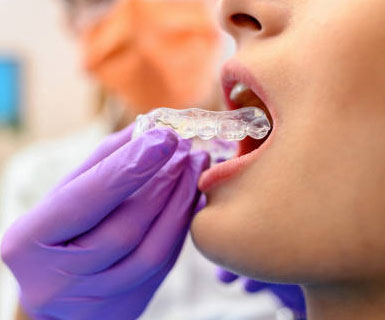
Tooth Extractions & Bone Preservation
These implants are the ideal solutions when you have a single tooth missing. Although the entire process can take months to be completed, the result can be extremely good. You would hardly be able to tell the difference between the real teeth and the artificial tooth (called a crown). It enables you to resume normal functions of the mouth, like eating and speaking.
The doctor has good experience with single-tooth implants and has had successfully restored the smile of numerous patients. Knowing everything about dental implants would help you make an informed decision as to whether these are best for you.

What are implants?
These are cylinders or screws made of titanium placed surgically in the jawbone where the tooth is missing. The procedure is performed under conscious sedation. In the next two to four months, the implants and the bones are allowed to bond together so that it forms a stable anchor for the artificial tooth. In this phase, a temporary tooth replacement option can be placed at the implant site for cosmetic reasons.
When the gums have healed, an impression of the implants is taken to determine the angle and position of the artificial tooth. Before placing the artificial tooth, an abutment must be placed over the implant. A healing cap is added to the abutment to prevent gum tissues from growing over it. When the gum has healed around the custom abutment, the artificial tooth is placed on it. It is made of porcelain, is custom-made, and is called a crown. As long as you don’t have the crown placed, there will be a gap in your gum line. A temporary tooth is placed in this phase for aesthetic purposes. This temporary tooth is removed before placing the final crown permanently in place.
The American Academy of Implant Dentistry classifies these into two main types. These are:
1. Endosteal implants: These are most commonly used, and they have been described above. An endosteal implant has three parts, the implant, the abutment, and the crown. The abutment can be made of titanium or porcelain. The crown can be made of porcelain fused to metal (PFM), all-porcelain, or all-metal. We will help you choose the right crown following a consultation.
2. Subperiosteal implants: These are less common and are used on patients without enough healthy bone at the implant site. In this process, a metal frame is attached to the jawbone below the gum tissue. Posts fixed on the frame jut out through the gums. The crown or artificial tooth is attached to this post.
Eligibility criteria
The primary condition to receive dental implants is to have healthy gum conditions. Furthermore, there must be adequate bone present to support the implant. If you do not have sufficient bone presence, you might consider bone grafting before placing the implant. We would suggest you the right option only after a thorough checkup of your teeth. If you suffer from certain medical conditions such as diabetes, bleeding disorders, or high blood pressure, you may be deemed unfit for implant placement. North County Dental Arts use advanced diagnostic tools like digital x-rays and intraoral cameras to decide if you are an eligible candidate.
